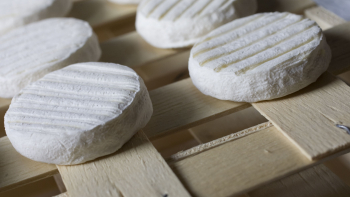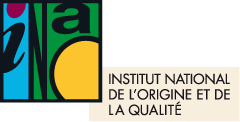Exposition 90 ans : How to obtain a quality and origin label?
INAO is the public body responsible for the recognition, control and protection of SIQOs. Applications for recognition submitted to the INAO are made by the operators themselves, who form a group to defend their interests. Any operator can produce under SIQO if he complies with the collectively defined specifications approved by INAO.
WHAT ARE THE CONDITIONS FOR RECOGNIZING A PRODUCT AS SIQO (EXCLUDING AB)?
The INAO verifies that the group of operators knows how to:
- Characterize its product with regard to the sign envisaged (superior quality for Label Rouge, link with geographical origin for PDO or PGI), through practices, production criteria and distinctive characteristics, while taking into account the economic environment
- Defining production conditions adapted to the SIQO, environment or the chosen production method
- Guarantee that these production conditions are controllable
- Group together all the operators involved in the project, and is capable of subsequently managing the SIQO applied for, particularly in terms of controls and product enhancement
These conditions must ensure the sustainability of the product and the ODG that bears it.
WHAT ARE THE STEPS TO RECOGNIZE A PRODUCT UNDER SIQO?
INAO assists the applicant group in compiling its dossier, which includes a draft specification and an inspection plan.The specification precisely defines the production conditions and quality criteria for an appellation.
It provides a framework for agricultural practices, sets authorized geographical areas and imposes specific requirements, for example animal feed (mostly grass or local forage) or milk sourcing within a restricted perimeter. It thus ensures product identity, appearance, taste, authenticity and traceability.
Once the application has been submitted and deemed admissible, it is investigated by professionals from the sector drawn from the relevant INAO National Committee (a body made up mostly of professionals, appointed by the Minister in charge of Agriculture for a 5-year term) and supported by scientific experts.
Based on the opinion of a Commission of Inquiry, this committee can propose recognition of the SIQO. This decision is then subject to a public opposition phase. If no opposition is upheld, recognition becomes official: by ministerial decree, then by European registration for PDO and PGI.
Before this publication, the INAO director must have validated the control plan and approved an independent body, responsible for checking that the product complies with the specifications.
The producer group then becomes, by decision of the INAO, officially an Organisme de Défense et de Gestion (ODG), responsible for monitoring the specifications and promoting the product.
Organic Agriculture works differently: it is based on individual commitment. Each producer or processor applies a European regulation common to all EU countries. The INAO oversees this system by approving independent certifying bodies, which inspect farms every year and issue attestations of conformity. This supervision guarantees the reliability of the "organic" label, through the use of the logo.

EXAMPLE OF PRODUCTION REQUIREMENTS IN THE "ROCAMADOUR" PDO SPECIFICATIONS
For example, in the case of the "Rocamadour" PDO, the specifications require that milk for production be collected every 48 hours at most, and include only the last four milkings at most. This requirement ensures the freshness of the milk and contributes to respecting the traditional characteristics of the cheese.
.Exhibition summary: INAO, 90 years at the service of French agriculture
Further information
- Recognition and revision of specifications for products under SIQO
- Les avis des instances
- How to produce or develop an existing SIQO product?
- How to have a product recognized under an official sign of identification of quality and origin?
- AOC and PGI delimited geographical or parcel area projects
- Opposition procedures
Download the exhibition panel
Exposition 90 ans INAO - Panneau 8
« COMMENT OBTENIR UN SIGNE OFFICIEL D’IDENTIFICATION DE LA QUALITÉ ET DE L’ORIGINE ? »
